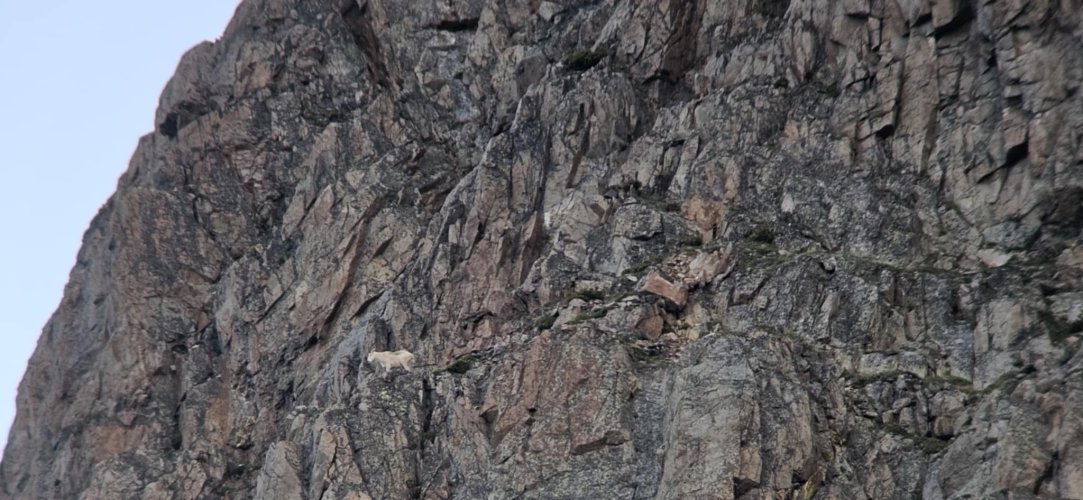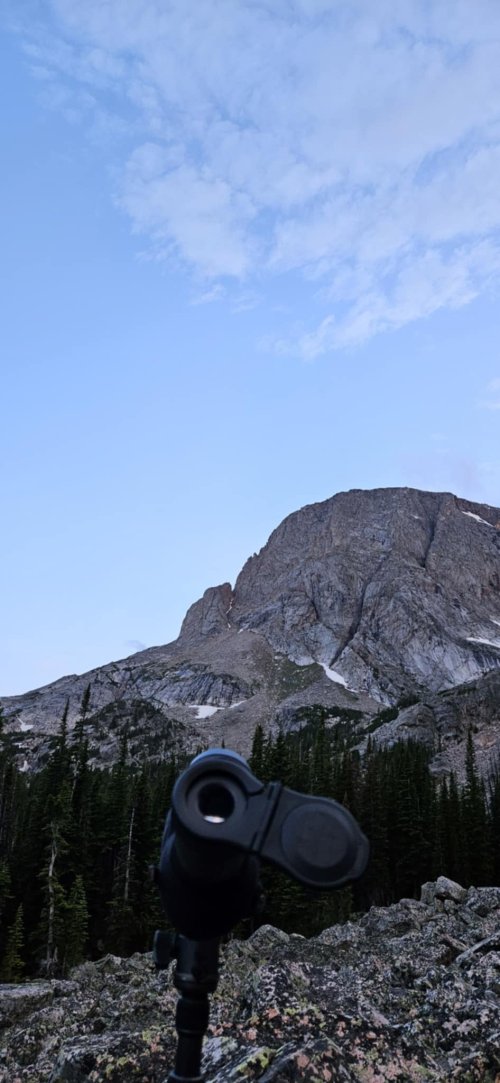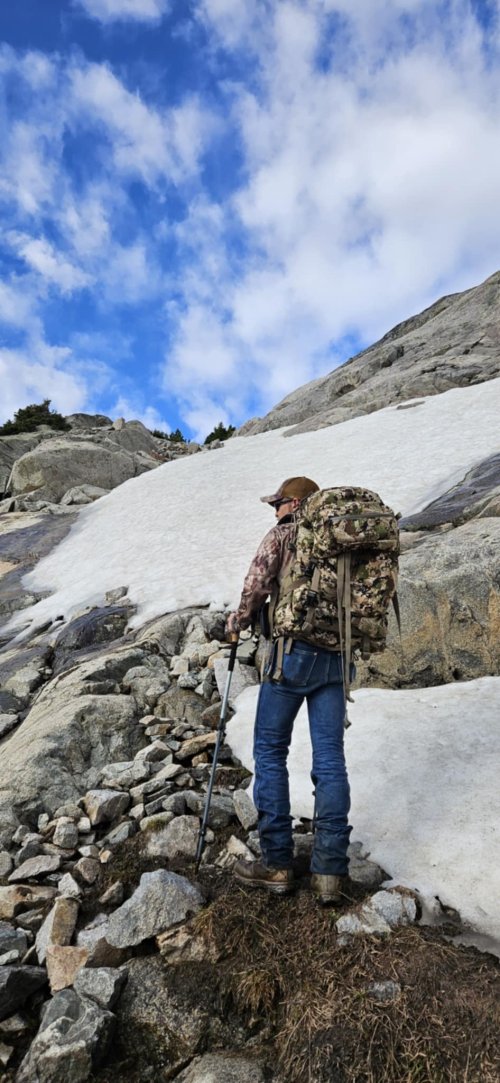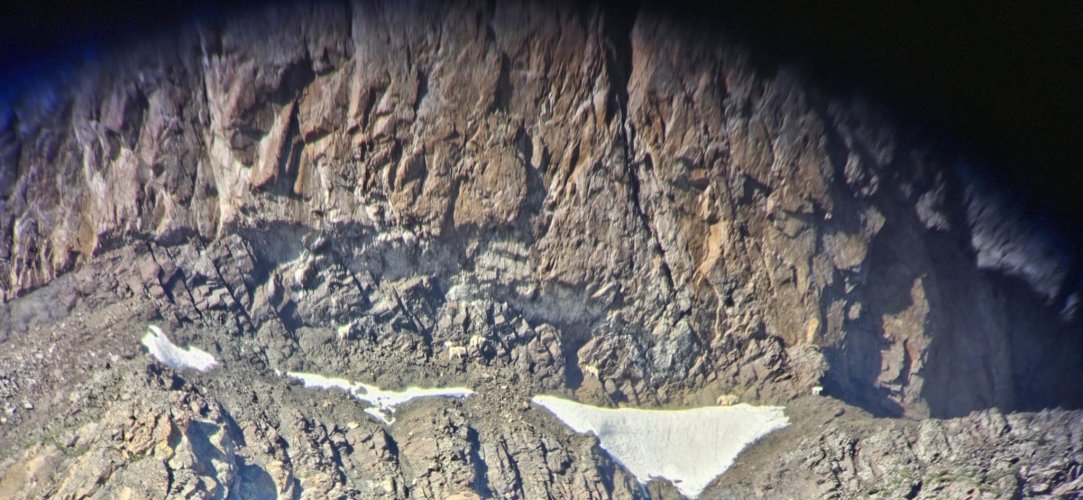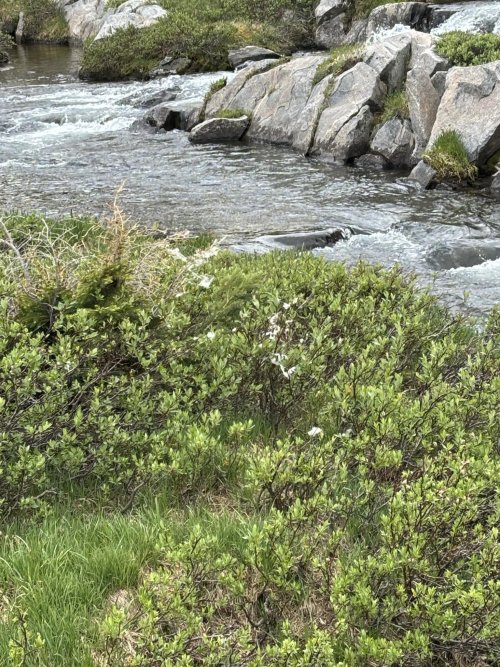HuntMT16
Active member
A few weekends ago I was able to make it up into the mountains for the first scouting trip for my Montana Mountain Goat hunt. I am fortunate to live very close to my hunt unit so there will be some more scouting trips in the near future. But for now, I figured I would share some things learned from the first trip.
Trekking poles are worth their weight in gold. I've never used them before and swore I never would but they were one of my first purchases after learning I drew my tag. Let me tell you, I hate myself for not buying them 20 years ago. Creek crossings are easier and safer having additional points of contacts on the ground. Going up hill with trekking poles saves a ton of energy and they saved my bacon at least twice preventing falls due to having another point of contact on the ground.
Speaking of falls, I learned my boots need to be upgraded. I used them all last hunting season and never had a problem, they are warm and comfortable, but I realized they have little grip on rocks. We did a lot of boulder hopping going both uphill and down hill and I can't tell you how many times my boots slide (even more so after creek crossings) across the tops of rocks making secure footing impossible. I'll be in the market for a new pair and will more carefully consider the amount of grip the boots provide.
I upgraded from my Eberlestock to a Mystery Ranch Marshall for this hunt with plans to stay several nights in the back country. I'm glad I made the switch. I thought the Marshall might be "too much" pack but it fills up quickly and I'm glad I went with the bigger brother after considering the Metcalf. The pack was comfortable going in and out and carried the weight well. Organization was not as bad as I expected with the extra pockets, although I am disappointed my tripod does not fit in the external pocket, I have to carry it in the side pouch. The 3L water bladder is way more than what is needed as there is water readily available everywhere you turn.
I've never been an ounce counter when it comes to my pack and have always tended to run a little heavier than most opting with the mind set of I'd rather have it and not need it than need it and not have it. While there are certain things that will always stay in my pack (first aid, survival, fire starters, etc) the backpack definitely needs to go on a diet. I started looking closer at weight on some items purchased for this hunt, but ounces add up quickly. Some obvious starting points are loosing the mule tape and replacing it with 550 cord, running plastic baggies instead of hard plastic boxes are the first step, but I am going to have to look long and hard at areas to cut weight.
I purchased a Klymit Wild Aspen 0 degree bag for this hunt. I used it on the scouting trip and got pretty cold in the early morning hours. While the bag packs well, it is a really small fit (which says a lot because I am a pretty small guy) and I had a hard time getting in the bag and zipping it.
All the other gear I purchased, jet boil, sleeping pad, inreach, etc. worked pretty much as expected.
While my buddy and I did glass up 11 goats total (1 Mature Billy and 10 Nannies/kids) it was a bit of an eye opener as I expected to see more goats. With (basically) a 100% success rate over the last several years, I may have over anticipated how many goats we would see. Maybe it's just the area we were in did not have as many goats as expected and there are more in other areas, but this was the area initially planned for the first week of the hunt. Considering we were only able to glass for an hour or so on day one and a few hours on day two before hiking out, 11 goats probably isn't a bad turn out. But I have not idea since this is the first time I've been looking for goats as opposed to just finding them while hunting deer and elk.
The wind and snow cut into our glassing time most of the afternoon for day one of the trip. I learned that I need to keep my tarp (a small light weight backpacking tarp) in the bag at all times so we use it as a shelter and can stay somewhat out of the weather and stay glassing. Most importantly I knew I needed to get into better shape for this hunt and have been working on that since learning I drew the tag. Getting into the mountains and hiking is the best way to do this and is far better than working out at home, but I am glad I started the process as early as I did.
For anyone who is applying for a Mountain Goat tag, or really any tag where they plan to stay several nights in the back country, start buying gear now as you have extra pocket change. Even if items sit in the closet un-used for a few years it's easier (for us poor folk anyhow) to buy a little at a time. Switching for day hunt (or back country horseback hunts) to backpack hunt gear, the cost adds up quickly. I was not expecting to draw the tag ( I only had one bonus point) so I wasn't figuring on drawing the tag any time soon so I wasn't worried about the needed upgrade for equipment. I've dropped a lot more cash on this hunt than any other I've done and fortunately I have an understanding wife. But start sooner than later at getting the gear needed for these kinds of hunts, you wallet will thank you when the time does come.
Last but not least, no tents were shanked during the trip and the tent came home in one piece.
Trekking poles are worth their weight in gold. I've never used them before and swore I never would but they were one of my first purchases after learning I drew my tag. Let me tell you, I hate myself for not buying them 20 years ago. Creek crossings are easier and safer having additional points of contacts on the ground. Going up hill with trekking poles saves a ton of energy and they saved my bacon at least twice preventing falls due to having another point of contact on the ground.
Speaking of falls, I learned my boots need to be upgraded. I used them all last hunting season and never had a problem, they are warm and comfortable, but I realized they have little grip on rocks. We did a lot of boulder hopping going both uphill and down hill and I can't tell you how many times my boots slide (even more so after creek crossings) across the tops of rocks making secure footing impossible. I'll be in the market for a new pair and will more carefully consider the amount of grip the boots provide.
I upgraded from my Eberlestock to a Mystery Ranch Marshall for this hunt with plans to stay several nights in the back country. I'm glad I made the switch. I thought the Marshall might be "too much" pack but it fills up quickly and I'm glad I went with the bigger brother after considering the Metcalf. The pack was comfortable going in and out and carried the weight well. Organization was not as bad as I expected with the extra pockets, although I am disappointed my tripod does not fit in the external pocket, I have to carry it in the side pouch. The 3L water bladder is way more than what is needed as there is water readily available everywhere you turn.
I've never been an ounce counter when it comes to my pack and have always tended to run a little heavier than most opting with the mind set of I'd rather have it and not need it than need it and not have it. While there are certain things that will always stay in my pack (first aid, survival, fire starters, etc) the backpack definitely needs to go on a diet. I started looking closer at weight on some items purchased for this hunt, but ounces add up quickly. Some obvious starting points are loosing the mule tape and replacing it with 550 cord, running plastic baggies instead of hard plastic boxes are the first step, but I am going to have to look long and hard at areas to cut weight.
I purchased a Klymit Wild Aspen 0 degree bag for this hunt. I used it on the scouting trip and got pretty cold in the early morning hours. While the bag packs well, it is a really small fit (which says a lot because I am a pretty small guy) and I had a hard time getting in the bag and zipping it.
All the other gear I purchased, jet boil, sleeping pad, inreach, etc. worked pretty much as expected.
While my buddy and I did glass up 11 goats total (1 Mature Billy and 10 Nannies/kids) it was a bit of an eye opener as I expected to see more goats. With (basically) a 100% success rate over the last several years, I may have over anticipated how many goats we would see. Maybe it's just the area we were in did not have as many goats as expected and there are more in other areas, but this was the area initially planned for the first week of the hunt. Considering we were only able to glass for an hour or so on day one and a few hours on day two before hiking out, 11 goats probably isn't a bad turn out. But I have not idea since this is the first time I've been looking for goats as opposed to just finding them while hunting deer and elk.
The wind and snow cut into our glassing time most of the afternoon for day one of the trip. I learned that I need to keep my tarp (a small light weight backpacking tarp) in the bag at all times so we use it as a shelter and can stay somewhat out of the weather and stay glassing. Most importantly I knew I needed to get into better shape for this hunt and have been working on that since learning I drew the tag. Getting into the mountains and hiking is the best way to do this and is far better than working out at home, but I am glad I started the process as early as I did.
For anyone who is applying for a Mountain Goat tag, or really any tag where they plan to stay several nights in the back country, start buying gear now as you have extra pocket change. Even if items sit in the closet un-used for a few years it's easier (for us poor folk anyhow) to buy a little at a time. Switching for day hunt (or back country horseback hunts) to backpack hunt gear, the cost adds up quickly. I was not expecting to draw the tag ( I only had one bonus point) so I wasn't figuring on drawing the tag any time soon so I wasn't worried about the needed upgrade for equipment. I've dropped a lot more cash on this hunt than any other I've done and fortunately I have an understanding wife. But start sooner than later at getting the gear needed for these kinds of hunts, you wallet will thank you when the time does come.
Last but not least, no tents were shanked during the trip and the tent came home in one piece.




